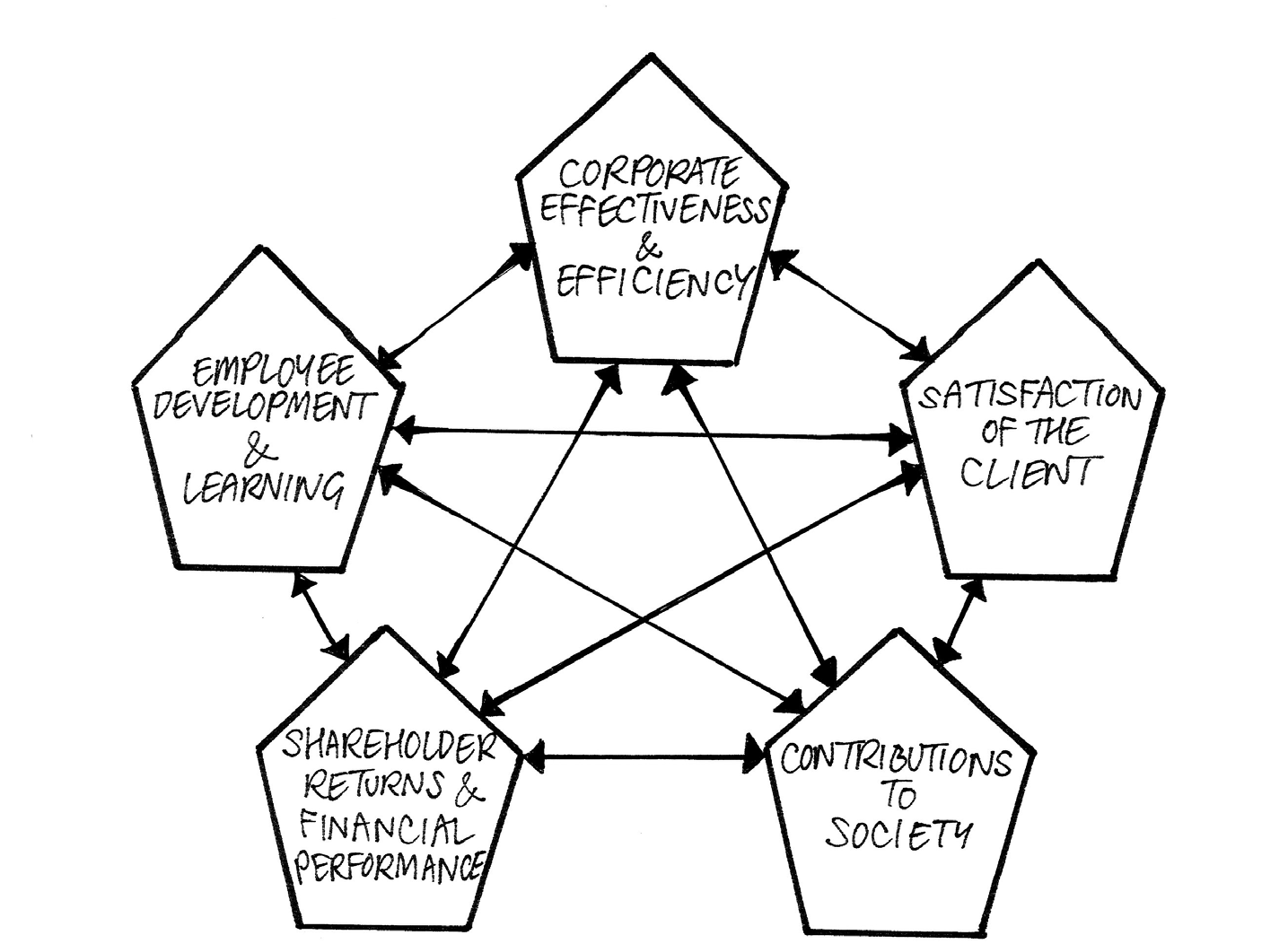Top 10 management models for your business: #2 Multiple stakeholder sustainabilty
18 June 2014 by Infinite Ideas in 100+ Management Models, Business and finance
by Fons Trompenaars and Piet Hein Coebergh, co-authors of 100+ Management Models.

Problem Statement
How can I assess the most significant organizational dilemmas resulting from conflicting stakeholder demands and also assess organizational priorities to create sustainable performance?
Essence
Organizational sustainability is not limited to the fashionable environmental factors such as emissions, green energy, saving scarce resources, corporate social responsibility, et cetera. The future strength of an organization depends on the way leadership and management deal with the tensions between the five major entities facing any organization: efficiency of business processes, people, clients, shareholders and society. The manner in which these tensions are addressed and resolved determines the future strength and opportunities of an organization. This model proposes that sustainability can be defined as the degree to which an organization is capable of creating long-term wealth by reconciling its most important (‘golden’) dilemmas, created between these five components. From this, professors and consultants Fons Trompenaars and Peter Woolliams have identified ten dimensions
Model 7: Multiple ultiple stakeholder stakeholder sustainability sustainability sustainability , Fons Trompenars and Peter Woliams Woliams Woliams (2010)
57
consisting of dilemmas formed from these five components because each one competes with the other four.
How to use the model:
The authors have developed a sustainability scan to use when making a diagnosis. This scan reveals:
- The major dilemmas and how people perceive the organization’s position in relation to these dilemmas.
- The corporate culture of an organization and their openness to the reconciliation of the major dilemmas.
- The competence of its leadership to reconcile these dilemmas. After the diagnosis the organization can move on to reconciling the major dilemmas that lead to sustainable performance. To this end, the authors developed a dilemma reconciliation process.
Results
To achieve sustainable success, organizations need to integrate the competing demands of their key stakeholders: operational processes, employees, clients, shareholders and society. By diagnosing and connecting different viewpoints and values their research and consulting practice results in a better understanding of:
ll. The key challenges the organization faces with its various stakeholders and how to prioritize them.
ll. The extent to which leadership and management are capable of addressing the organizational dilemmas.
ll. The personal values of employees and their alignment with organizational values.
These results help an organization define a corporate strategy in which crucial dilemmas are reconciled and ensure that the company’s leadership is capable of executing the strategy sustainably. It does so while specifically addresing the company’s wealth creating processes before the results show up in financial reports. It attempts to anticipate what the corporate financial performance will be, some six months to three years in the future, as the financial effects of dilemma reconciliation are budgeted.
Comments
The sustainability scan reconciles the key dilemmas that corporations face today and tomorrow. It takes a unique approach to making strategic decisions that are tough as well as inevitable with the goal of realizing a profitable and sustainable corporate future. Consulting firm Trompenaars-Hampden Turner offers an elaborate set of tools, of which a substantial part is available at no cost, to make this approach happen. The leading partners of this firm
Sustainability ustainability ustainability
58
have strengthened the approach in dozens of academic articles and books. The fact that their approach is rather closely attached to their consulting practice does limit its dispersion among other practitioners and academics.
Literature
Buytendijk, F. (2010) Dealing with Dilemmas: Where Business Analytics Fall Short, New York, John Wiley.
Hampden-Turner, C. (1990) Charting the Corporate Mind: Graphic Solutions to Business Conflicts, New York, The Free Press.
Trompenaars, F., Woolliams, P. (2009) ‘Towards a Generic Framework of Competence for Today’s Global Village’, in: The SAGE Handbook of Intercultural Competence, ed. D.K. Deardoff, Thousand Oaks, Sage.

